Use of Cookies
Our website uses cookies to facilitate and improve your online experience.
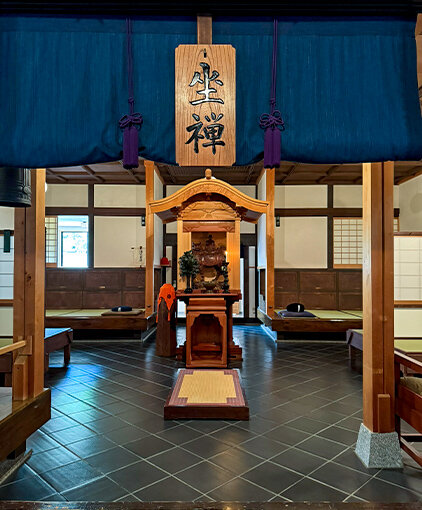 In traditional monasteries there is a building called the monks’ hall (sodo) in which practitioners sleep, eat, and practice zazen together. In the sodo, there is a platform called a tan which is about two feet high. Each person has a space of one straw mat (tatami) on which to eat, sleep, and sit. Manjushri Bodhisattva, the symbol of wisdom, is enshrined in the center of the hall.
In traditional monasteries there is a building called the monks’ hall (sodo) in which practitioners sleep, eat, and practice zazen together. In the sodo, there is a platform called a tan which is about two feet high. Each person has a space of one straw mat (tatami) on which to eat, sleep, and sit. Manjushri Bodhisattva, the symbol of wisdom, is enshrined in the center of the hall.
The zendo is a hall just for sitting practice. In that sense, it differs from the sodo, yet the same manners apply. Manners in the Zendo may vary in detail, depending upon the monastery or temple. Receive and follow the instructions given at each place. Here, only the basic manners regarding zazen are described.
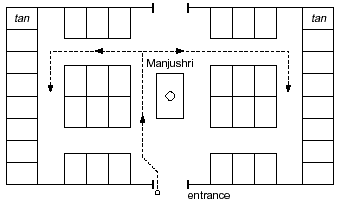
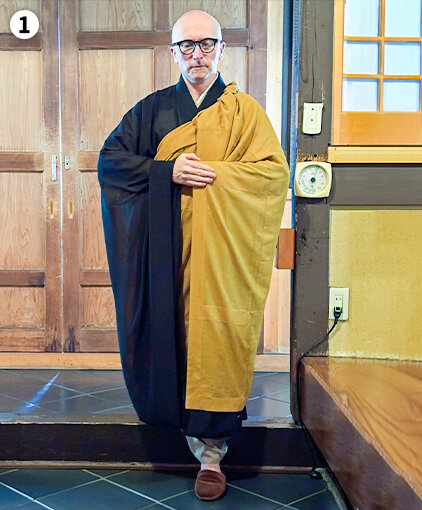
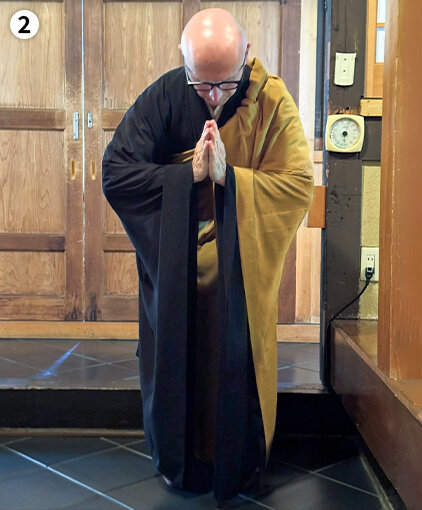
Hold your hands in shashu position and step forward with your left foot at the left side of the entrance. When leaving the zendo, step out with your right foot at the same side of the entrance. Only the abbot of the monastery may enter the hall from the middle of the entrance.
After entering the hall, bow in gassho toward the altar and go to your seat. As a sign of respect, you should refrain from walking in front of the statue of Manjushri Bodhisattva. Rather, you should walk around behind the image. When walking, keep your hands in the shashu position.
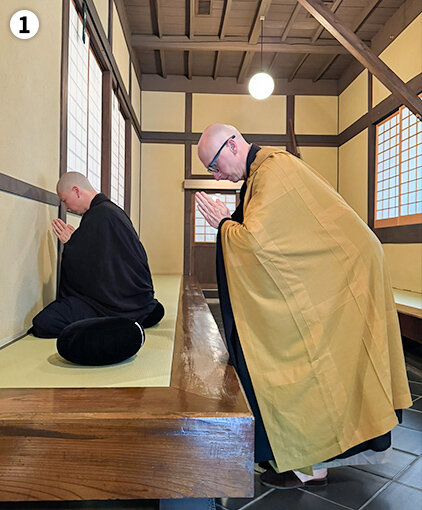
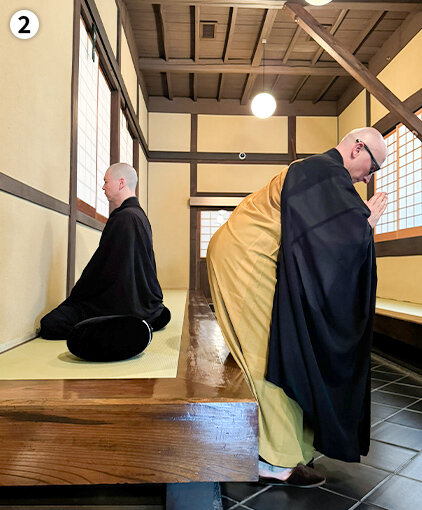
When you arrive at your seat, face the seat and bow in gassho. This is a greeting to the people who are about to do zazen with you at the seats on either side of you. The people sitting next to you also bow. This is called rini-monjin. Then, turn around to the right until your seat is behind you, and bow again to those sitting at the opposite side of the hall. This is a greeting to the people across the hall and is referred to as taiza-monjin.
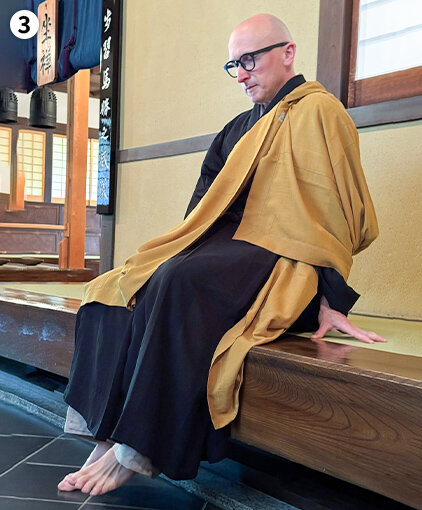
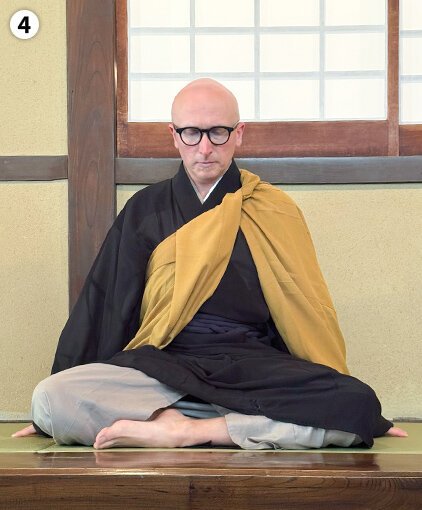
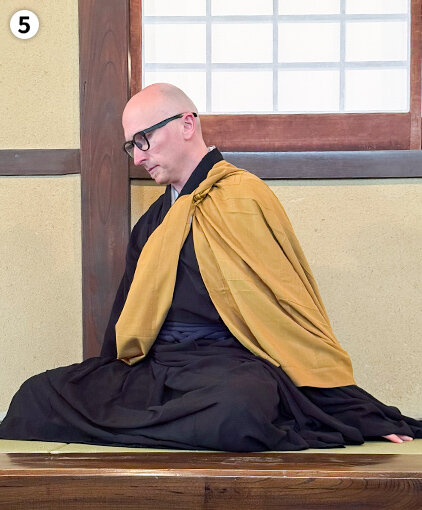
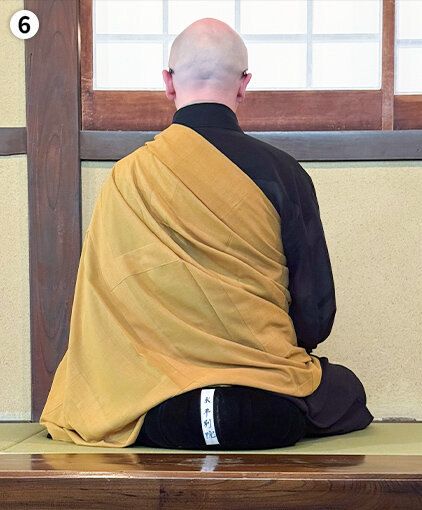
Sit down on your zafu, turn around to the right, and sit facing the wall. In the sodo, there is a wooden meal board (joen) at the edge of the platform (tan) on which bowls are set during meals. Do not place your buttocks or feet on the joen.
The bell is rung to signal the beginning and end of zazen. When zazen begins, the bell is rung three times (shijosho). When kinhin begins, the bell is rung twice (kinhinsho). And when kinhin is finished, the bell is rung once (chukaisho). Also, when zazen is finished, the bell is rung once (hozensho).
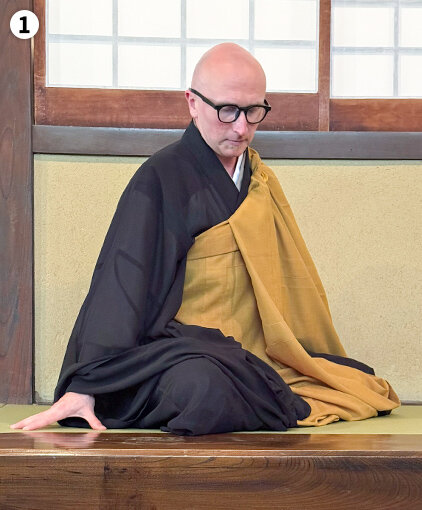
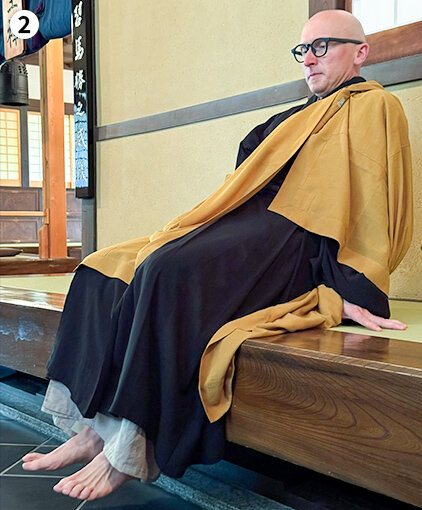
When the bell is rung twice to signal kinhin or once to signal the end of zazen, relax your body as explained above, and get down from the tan. Face the seat and adjust the shape of your zafu. Then, bow toward your seat. Next, turning around to the right, bow to the people on the opposite side as you did before sitting.
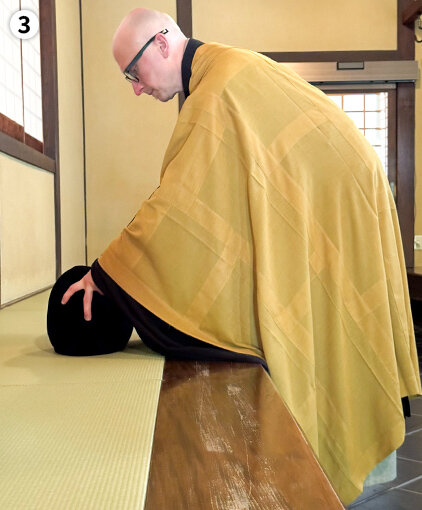
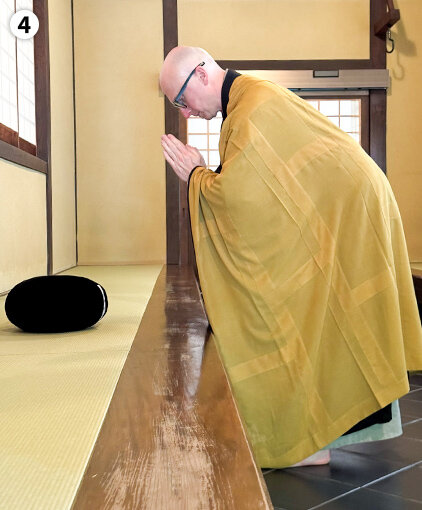
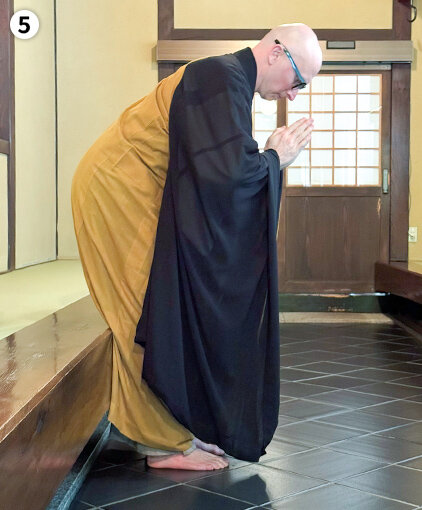
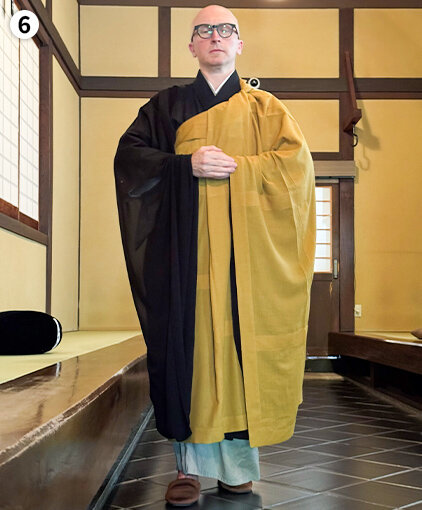
If there is no kinhin, leave your seat and walk to the entrance of the hall with your hands in the shashu position. Bow in gassho toward Manjushri Bodhisattva and leave the hall. Step out with your right foot this time. When you do kinhin, start to do it right away. Keep an equal distance between you and the people behind and in front of you. At the end of kinhin the bell is rung once. Stop and bow in shashu. Then walk at a normal pace following the person in front of you. Walk around the hall until you return to your seat. At this point you may go to the toilet if you wish. The next period of zazen will begin shortly.
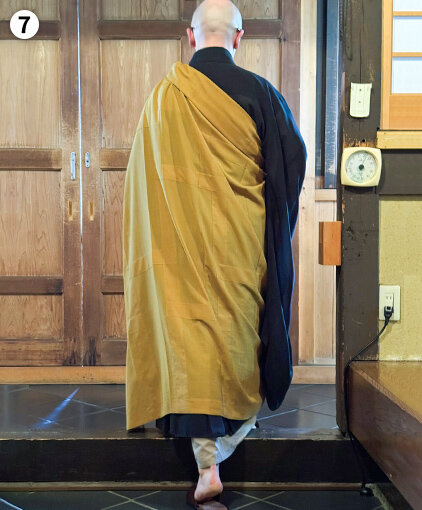
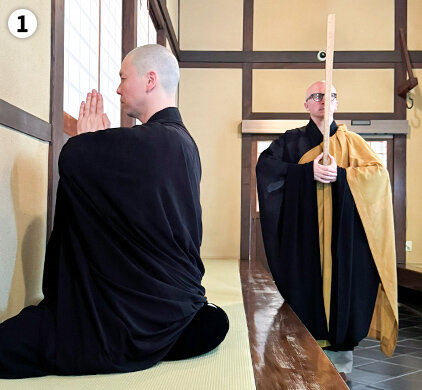
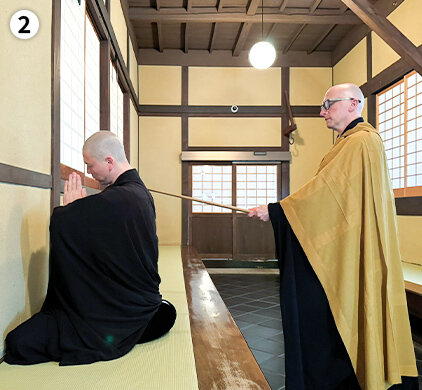
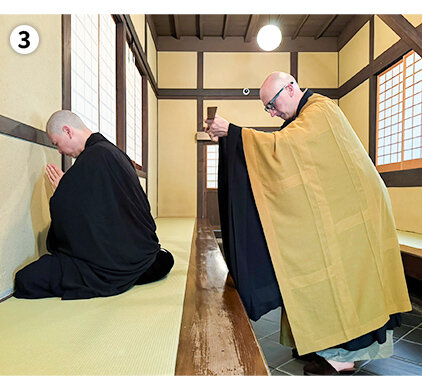
The kyosaku is a wooden stick with which the in a sense the human representative of Manjushri Bodhisattva (jikido), wakes people when they fall asleep or when their minds are busy. If you want to be struck with the kyosaku, signal with gassho and wait. When the jikido sets the stick on your right shoulder, lower your head to the left. This is to avoid being hit on the ear and to make it easier to hit the shoulder muscles. Continue to gassho. After the jikido hits your shoulder, straighten your head again and bow. The jikido also bows to you as he or she stands behind you, holding the stick with both hands.
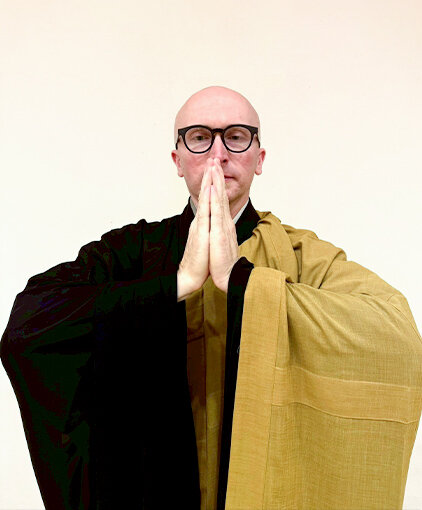 Gassho: Hold the palms and fingers of both hands together. Your arms should be slightly away from your chest, your elbows should extend outward from your sides in a straight line parallel with the floor. The tips of your fingers should be approximately the same level as your nose. This is an expression of respect, faith and devotion. Because the two hands (duality) are joined together, it expresses “One Mind.”
Gassho: Hold the palms and fingers of both hands together. Your arms should be slightly away from your chest, your elbows should extend outward from your sides in a straight line parallel with the floor. The tips of your fingers should be approximately the same level as your nose. This is an expression of respect, faith and devotion. Because the two hands (duality) are joined together, it expresses “One Mind.”
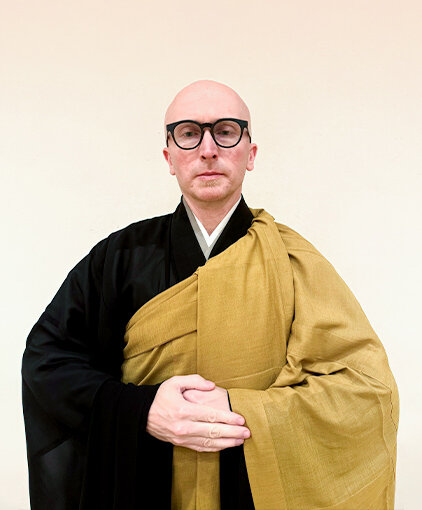 Shashu: Put the thumb of your left hand in the middle of the palm and make a fist around it. Place the fist in front of your chest. Cover the fist with your right hand. Keep your elbows away from your body forming a straight line with both forearms.
Shashu: Put the thumb of your left hand in the middle of the palm and make a fist around it. Place the fist in front of your chest. Cover the fist with your right hand. Keep your elbows away from your body forming a straight line with both forearms.
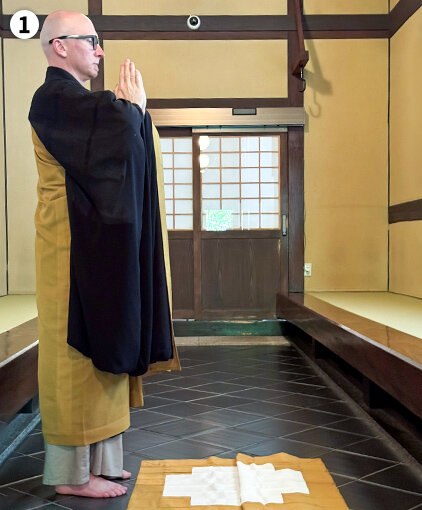
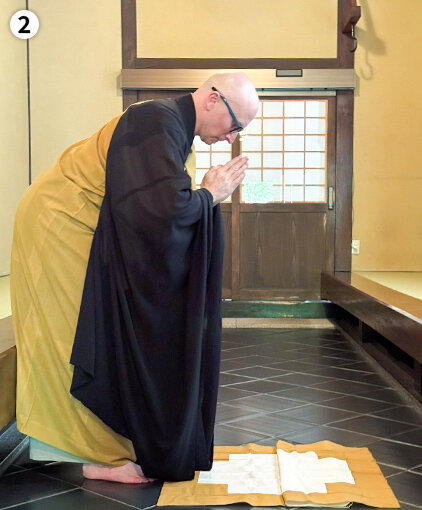
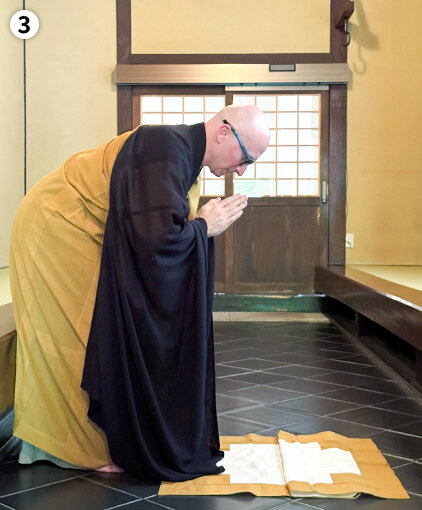
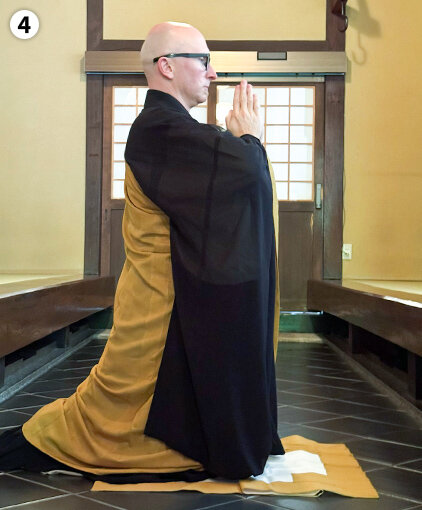
Stand upright and bow slightly in gassho from the waist. Then, bend your knees until they touch the floor. Bend forward from the waist, touching the floor with your hands (palms up), forearms, and forehead.
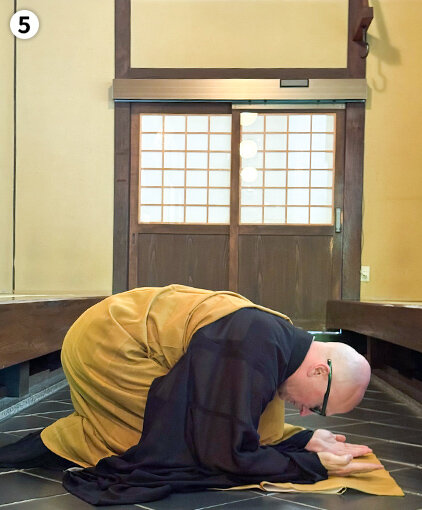
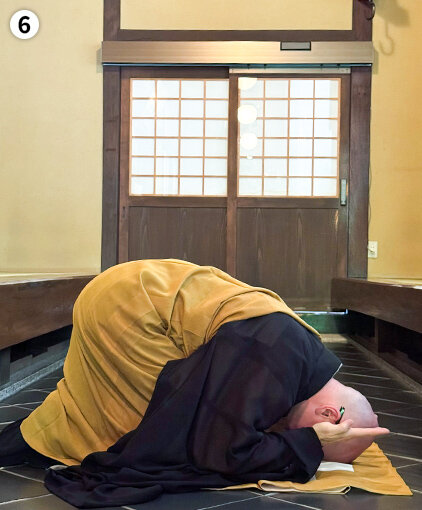
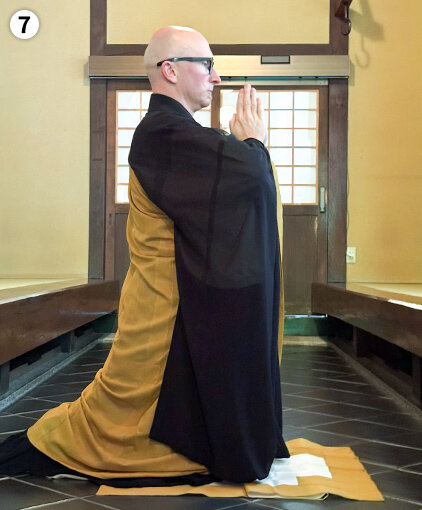
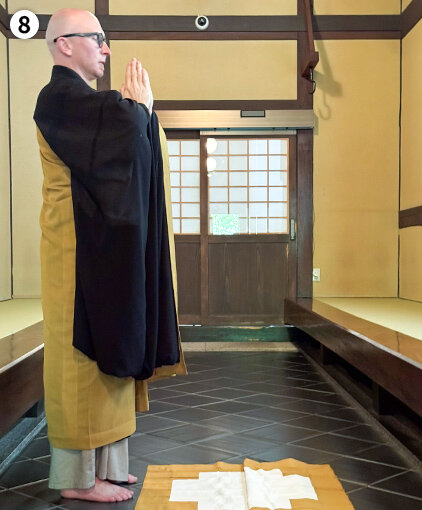
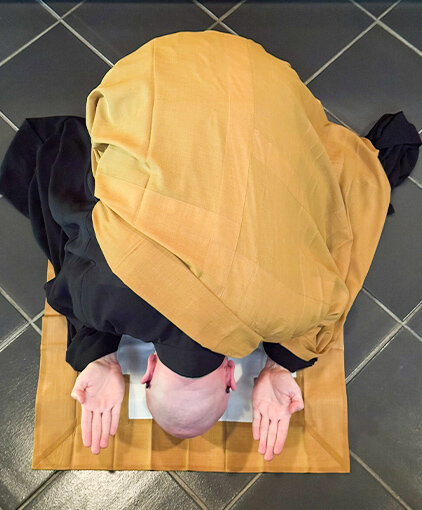 Keeping your palms level, raise them as high as your ears. Maintain this posture for a moment. Bringing your hands back into gassho, straighten up to a standing position and bow as before. Prostrating in this way three times is called sanpai. We do sanpai, for example, before and after chanting sutras. Five parts of the body (gotai) refers to both knees, both elbows and forehead, while tochi means casting them to the ground.
Keeping your palms level, raise them as high as your ears. Maintain this posture for a moment. Bringing your hands back into gassho, straighten up to a standing position and bow as before. Prostrating in this way three times is called sanpai. We do sanpai, for example, before and after chanting sutras. Five parts of the body (gotai) refers to both knees, both elbows and forehead, while tochi means casting them to the ground.